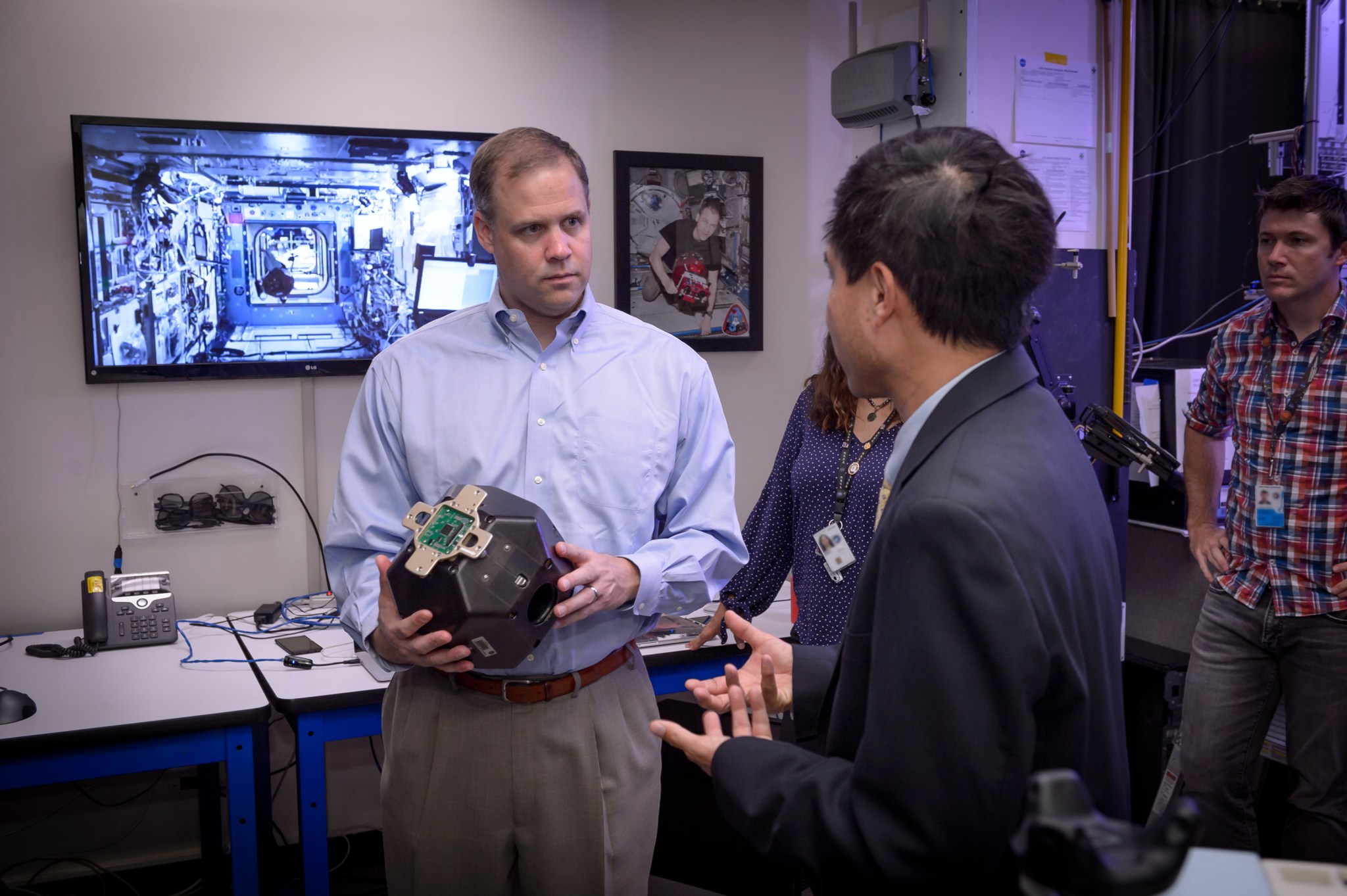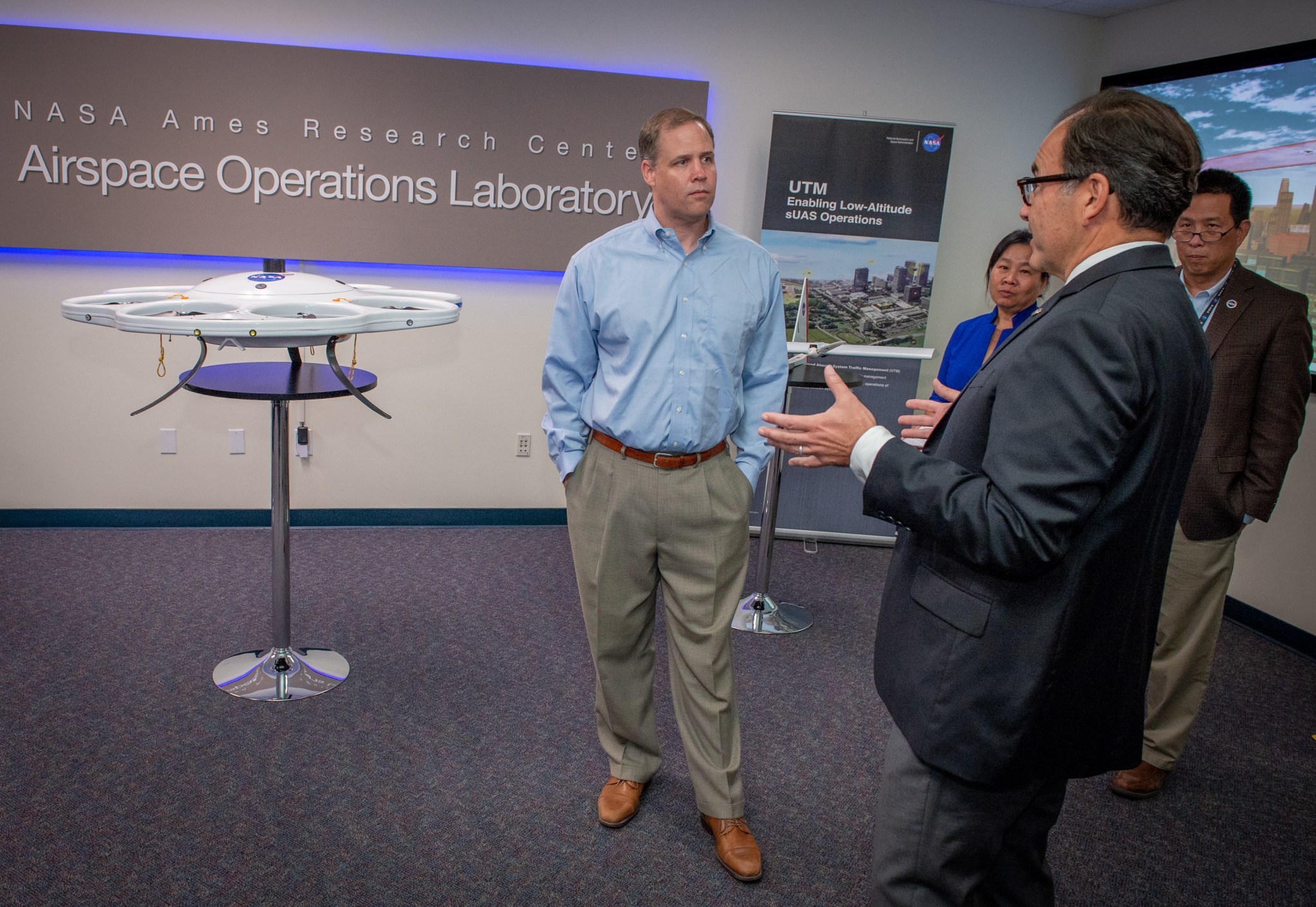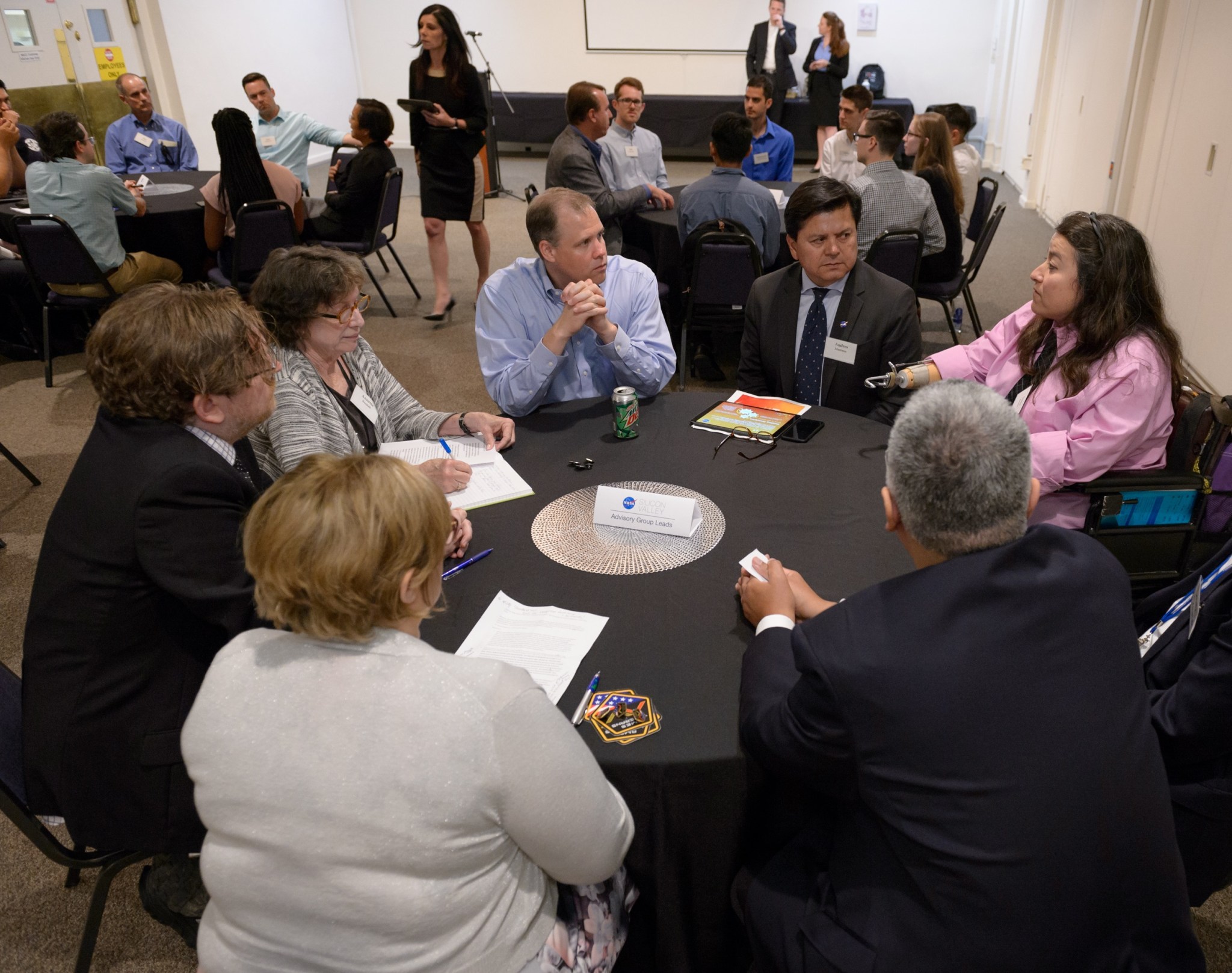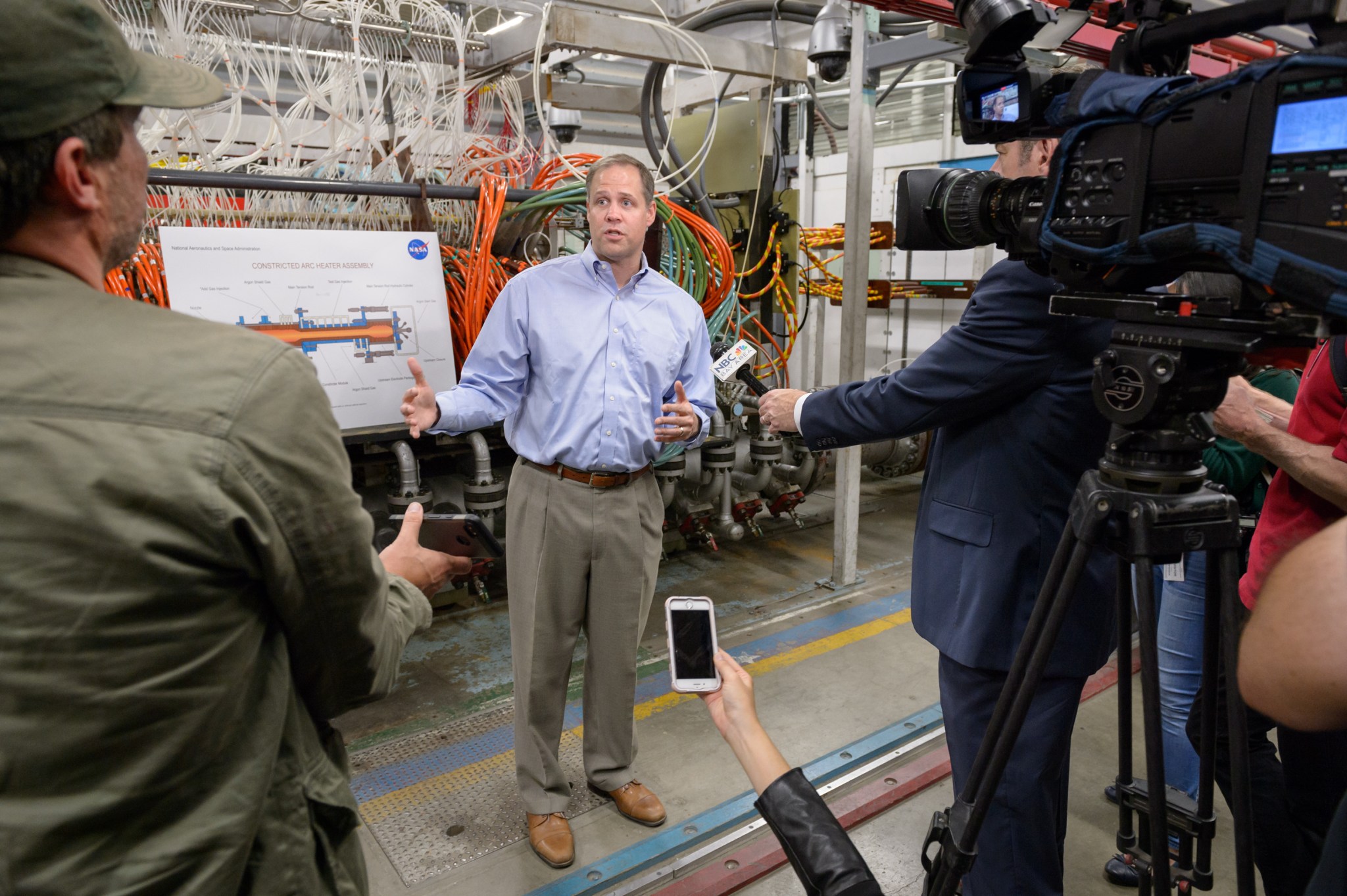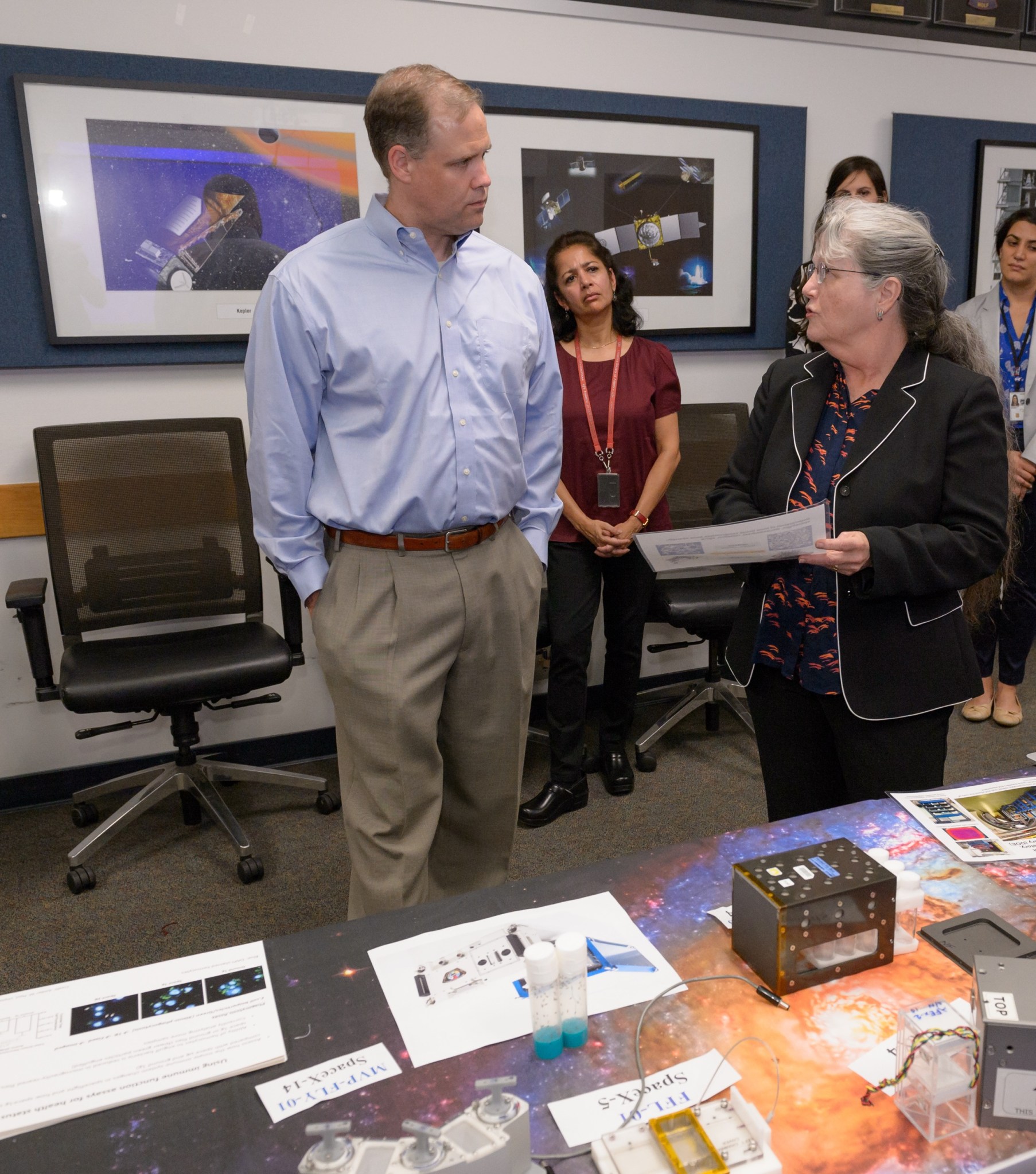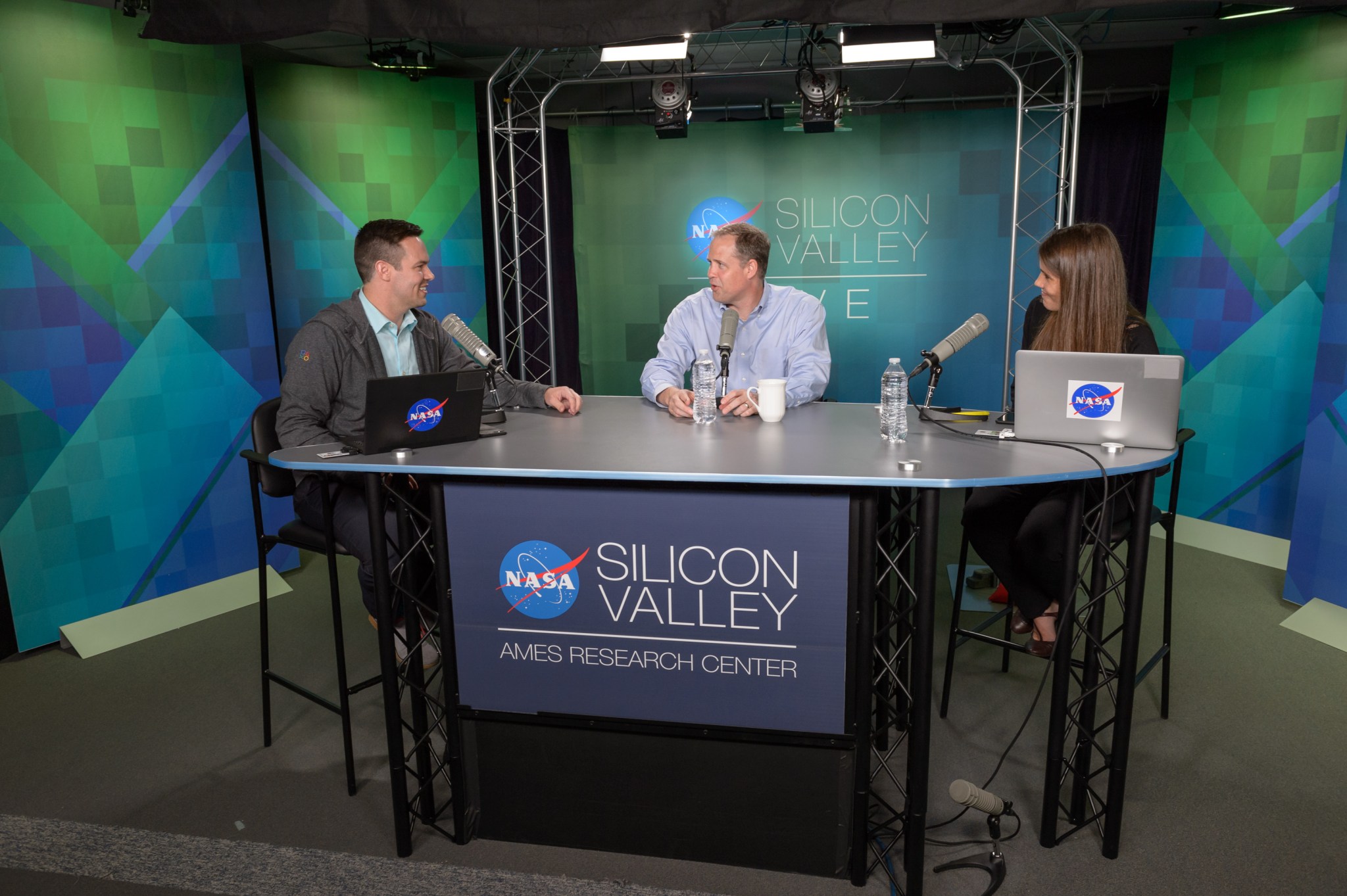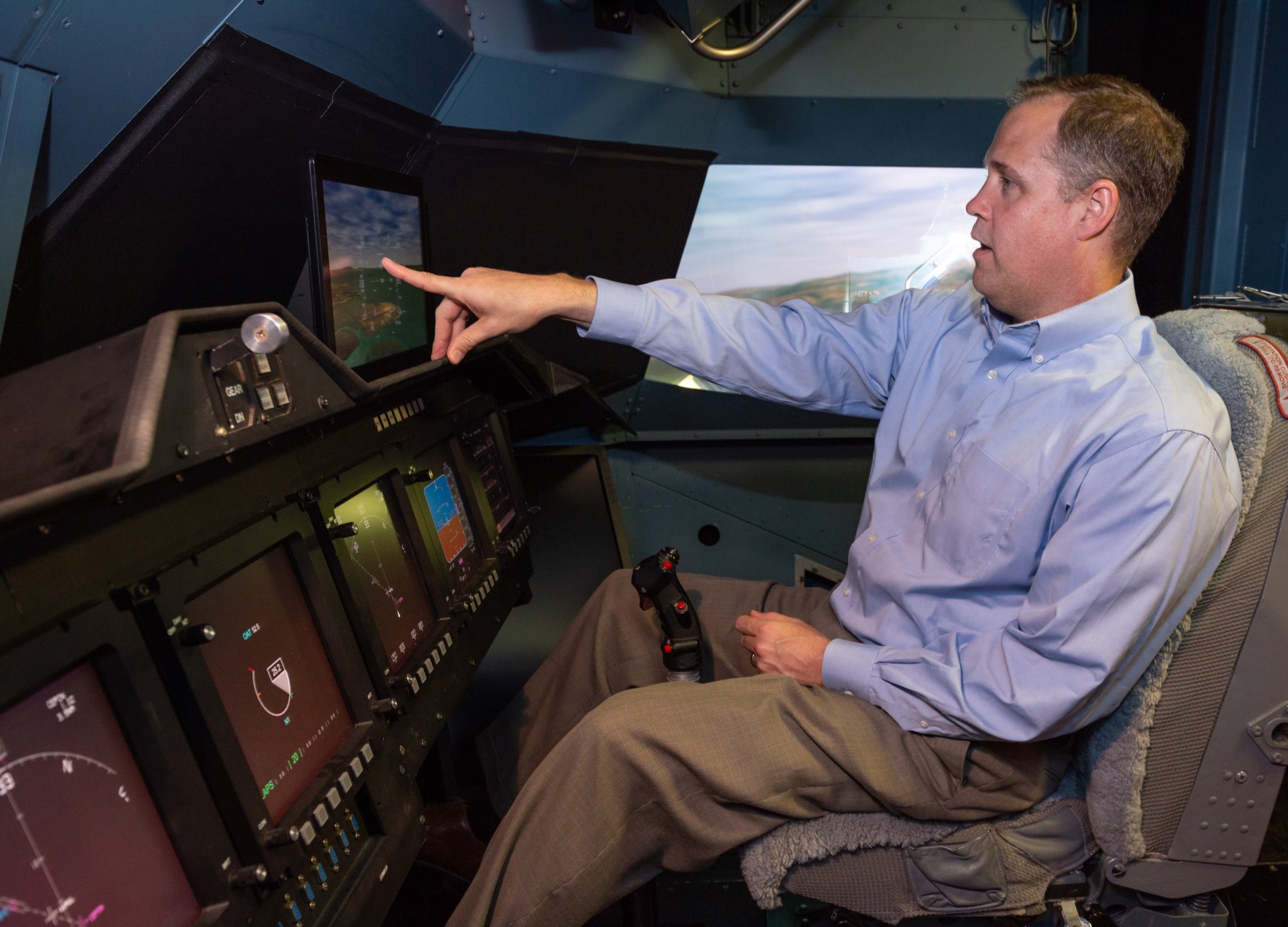“You’re going to be a part of making history, as your predecessors were a part of making history, and the United States of America is going to be better for it.”
On Aug. 30, 2018, NASA Administrator Jim Bridenstine toured the agency’s Ames Research in California’s Silicon Valley for the first time, recognizing the workforce for its contributions as the center prepares to celebrate its 80th birthday next year.
Bridenstine, who was sworn into office April 23 as the agency’s 13th administrator, has been touring the ten NASA field centers across the country, meeting the workforce that’s making NASA’s missions happen – from early-stage innovation to day-to-day operations of exploration.
While here, he saw a variety of research and facilities supporting every element of NASA’s portfolio, from aeronautics to space technology, human exploration and science.
His day started at the world’s two largest wind tunnels at the National Full-Scale Aerodynamics Complex. The cavernous facilities, which narrow into test areas that are 40- by 80-feet and 80- by 120-feet, have tested everything from full-scale 737 aircraft to Mars parachutes to semi-trucks.
Currently in the wind tunnel is NASA’s tilt rotor test rig. This allows us to investigate the basic aerodynamics of full-scale or large-scale advanced rotor blade designs, especially looking at the transition from vertical to forward flight. Tilt rotors will be an essential component for most of the craft that could be used for such things as “air taxis” under urban air mobility, a safe and efficient system for air passenger and cargo transportation within an urban area. They will allow aircraft to take off and land vertically with passengers and cargo, while traveling faster than conventional helicopters.
He went on to see one of Ames’ many examples of autonomous robotic technologies, the Astrobee robots that will be launching to the International Space Station. Each compact, one-foot cube Astrobee is designed to help scientists and engineers develop and test technologies for use in zero-gravity, help astronauts do their routine chores and give flight controllers in Houston additional eyes and ears on spacecraft.
Nearby he saw another example of Ames’ Silicon Valley know-how, applied through the development of planning and operational software tools for missions to the Moon.
“A lot of people might not be aware that most of our robotic Moon missions have been managed right here at Ames,” he said. “We thought the Moon was bone dry – but because of the lunar scientists here, we now know differently; because of your work in the future we’re going to know more about the Moon.”
Then it was on to see the future of our skies, with research being conducted at FutureFlight Central, a simulated flight control tower used to solve difficult airport and air traffic control issues. NASA is collaborating with the Federal Aviation Administration and industry partners to develop advanced automation concepts and tools that provide air traffic controllers, pilots and other airspace users with more accurate real-time information about the nation’s traffic flow, weather and routing. Demonstrations of tools developed at Ames have delivered promising results such as lower fuel consumption, reduced carbon dioxide emissions and fewer departure delays.
Armed with 35 years of experience innovating in air traffic management, as well as expertise in autonomous systems, Ames is also leading the charge in developing technologies for making uncrewed aircraft safely and smartly part of our daily lives – performing so-called “dirty, dangerous or dull” work such as making deliveries, performing inspections and aiding emergency rescues.
“When we think about the ability to integrate unmanned aircraft systems into the national airspace system – that’s going to be transformative for our country,” Bridenstine said. He hosted a short interview with an unmanned aircraft systems traffic management researcher on his @JimBridenstine Twitter account to share some interesting details about the work.
Bridenstine also spoke to employees at a town hall event where the packed audience asked questions. Afterward, representatives from the Pathways internship program, the center’s advisory groups and the winners of Ames’ most recent innovation fair joined the administrator for a session of speed networking and exchanging ideas.
During lunch, researchers from NASA’s flying telescope SOFIA presented their latest science results. The Stratospheric Observatory for Infrared Astronomy flies above the infrared-blocking part of Earth’s atmosphere, letting astronomers study the universe in ways that are not possible with ground-based telescopes. The mobility of SOFIA means it can be in the right place at the right time to capture unique celestial events that move over land and over oceans, where there are no telescopes.
He proceeded to Ames’ Arc Jet Complex, which simulates the intense conditions of “flying” a model at hypersonic velocity through a still atmosphere. The resulting temperatures and pressures approximate the shock heating experienced by a spacecraft during entry. This kind of testing is necessary design and test systems to protect spacecraft coming back from the Moon, or going to Mars.
During this time, local members of the news media were invited to meet the administrator and learn about Ames’ work supporting NASA’s mission to explore.
For Bridenstine’s afternoon tours, he interacted with the researchers who are exploring life from Earth to the solar system and beyond. Research at Ames addresses profound questions about life’s potential to survive and thrive in space and on other worlds. He saw BioSentinel, a CubeSat-based biology experiment that will go past the the Moon, with results that will help reduce the risk of space radiation exposure associated with long-term exploration by humans in space. Then he met with a series of scientists who deal with many other aspects of studying biology in space, using “model organisms” from fruit flies to rodents.
He wrapped up his briefings about Ames’ study of life in space with scientists taking on the vast topic of “Are we alone?” from multiple angles – from studying how life got started on Earth, to the extreme limits of habitability in our planet’s harshest environments, as well as determining how we may one day detect life in the solar system and in the atmospheres of distant planets.
Toward the end of the day, Bridenstine made an appearance on the first new episode of NASA in Silicon Valley Live, a biweekly talk show streamed from Ames that tells stories about the amazing work of our center. Bridenstine fit right in with the down-to-Earth show, geeking out about NASA’s incredible work and dropping pop culture references.
Bridenstine concluded the day with the treat of piloting an aircraft that doesn’t even exist yet – on the largest flight simulator in the world. As a former Navy pilot, he enjoyed flying a research simulator for NASA’s new X-59A aircraft, a demonstrator for quiet supersonic technologies. Currently, supersonic flight banned is over land because of the disruptive “boom” noises generated when aircraft fly faster than the speed of sound. However, using data from NASA research, new sound-based rules regarding supersonic flight over land can be written and adopted, which would open the doors to new commercial cargo and passenger markets to provide faster-than-sound air travel.
Before heading back to the east coast, Bridenstine concluded his visit to Ames with a morning tour through the NASA Advanced Supercomputing facilities. Ames’ supercomputers, regularly ranked among the nation’s most powerful, meet NASA’s big data needs for Earth and space science, space exploration and aeronautics topics. He also saw the Modular Supercomputing Facility, an innovative alternative to traditional high-end computing that reduces annual water usage by more than a million gallons of water and saves over a million-kilowatt hours of energy each year.
His last stop was the Quantum Artificial Intelligence Laboratory, where Ames experts are assessing the potential for quantum computers to tackle future computational challenges for the agency that are difficult or impossible for traditional supercomputers to handle.
“We love the fact that Ames is in Silicon Valley,” he said. “There’s so much innovation and so much integration with the capabilities that are produced and fielded here, and what Ames does. It’s a tremendous advantage to have you here.”





























